Updated to reflect the results of the 2022 general election.
Public service is an important part of South Dakota’s culture. Many, many people take a few years to serve, on school boards, city councils, or other local offices. Quite a few – nearly 4000 in state history – have served as part-time state legislators, often just for a couple terms. Fewer still – about 300 – have served in Congress, as Governor, or held another statewide office.
Of all these public servants, only 29 people in South Dakota history have served in a federal or state elected office for 25 years or more. (This includes service in Congress, statewide elected office, and the state legislature. It does not include judicial positions or local offices.)
The “Over 25 Club” include 26 Republicans and 3 Democrats, although among the Democrats is the longest-tenured entry on the list. Eight entries served in the U.S. Senate, six in the U.S. House, and only three as Governor. Twenty served in the State Legislature, twelve of whom spent their entire tenure as legislators.
The earliest member of the list began his service in 1905, and at any given time since 1909 at least one of these 29 have been in office, including five who hold office presently. Ten members of the list are alive today. All 29 are men – the closest woman is State Sen. Jean Hunhoff of Yankton, who will have served 24 years at the end of her current legislative term.
Below is the list, from #29 to #1. For current officeholders, it is assumed they will serve through the end of their current elected term. The ranking is quantitative, not qualitative – it is based on years of service. This means that a year as a state legislator counts the same as a year in the U.S. Senate, and many familiar and accomplished political figures are not included. Where there are ties in service, the ranking is determined by prioritizing service in the following order: U.S. Senate, Governor, U.S. House, Lt. Governor, Secretary of State, Attorney General, State Auditor, State Treasurer, Commissioner of School & Public Lands, Public Utilities Commissioner, State Senate, and State House; and then finally priority is given to service that was earlier in time.
THE OVER 25 CLUB

29. J. E. “Jim” Putnam, R-Armour – 25 years, 3 months
Putnam, a farmer and businessman, served for twenty-five years in the State Legislature, serving the entire time on the appropriations committee; he chaired the House appropriations committee from 1997-2000 and 2003-08. Putnam was initially appointed to the State House by Governor George S. Mickelson in October 1987 to fill a vacancy caused by the death in a farming accident of Rep. Gary Bender. Putnam served in the House until 2000, when he ran for the Senate due to term limits. After one term, he returned to the House from 2002-10, then returned to the Senate again in 2011-12. Putnam’s rural district changed significantly in the 2012 redistricting, and he lost in the Republican House primary that year. Putnam still resides in Armour.

28. Francis H. Case, R-Custer – 25 years, 6 months
Case was a newspaper editor and publisher. He ran for U.S. House from the Second District in 1934; this was the “west river” district during the era when South Dakota had two seats in the U.S. House. Case lost to Democratic incumbent Theodore B. Werner, but he defeated Werner in a rematch in 1936. Case’s closely career paralleled that of fellow Republican Karl Mundt (see below). He spent fourteen years in the U.S. House, then in 1950 successfully challenged incumbent U.S. Senator Chan Gurney in the Republican primary. Case’s major legacy to South Dakota comes from his influence over major federal infrastructure projects; Case advocated for Interstate 29 north of Sioux Falls to run through South Dakota, rather than Minnesota, and he was a major backer of the Pick-Sloan plan for Missouri River dam construction. The “lake” formed by the Fort Randall Dam in Pickstown is named Lake Francis Case in his honor. Case died shortly before the end of his second Senate term, in 1962.
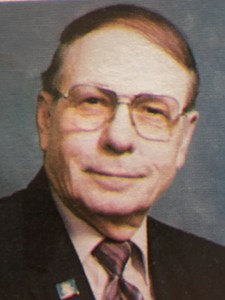
27. Royal J. “Bud” Wood, R-Warner – 26 years
Wood, a farmer, entered the House in 1967, beginning his legislative service the same year as Walter Dale Miller and Henry Poppen. He is among those this blog earlier remembered in the post “Old Bulls of the State Legislature.” Wood left the legislature in 1992 after a 26-year legislative career. Wood was assistant minority leader 1975-76, speaker pro tempore 1987-88, and house speaker 1989-90. He retired from the House in 1992, and died in 2009.

26. Henry A. Poppen, R-De Smet – 26 years
Poppen farmed in the Spirit Lake community, north of De Smet, and he is this blogger’s maternal grandfather. Poppen entered the State Senate in 1967, beginning his legislative service alongside Walter Dale Miller and Bud Wood. He is among those this blog earlier remembered in the post “Old Bulls of the State Legislature.” Poppen served 13 terms, retiring after 26 years in 1992. For most of his tenure, he served on the Senate Appropriations Committee; he is the longest-serving chairman of the appropriations committee in either house, holding that role in the Senate from 1981-92. Longtime reporter Terry Woster wrote a very kind reminisce of Poppen when he died in 2005.
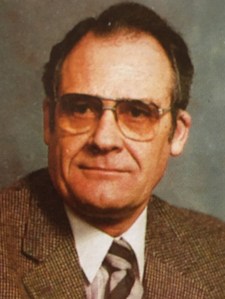
25. Harold W. Halverson, R-Twin Brooks – 26 years
Halverson, an insurance executive and farmer, spent one term in the House, from 1971-72, before becoming an institution in the Senate, serving from 1977-2000. He is among those this blog earlier remembered in the post “Old Bulls of the State Legislature.” Halverson was the Senate’s president pro tempore from 1990-92, and after Democrats took control of the chamber in 1992 he served as Minority Leader in 1993-94. Republicans regained control in 1994, and Halverson, conscious of the effect that term limits would have on legislative leadership, made a fateful and forward-looking decision. Rather than serve as senate majority leader himself, he returned to the position of president pro tempore, and supported 40-year-old Mike Rounds to be majority leader. Halverson was among the first legislators forced to out by term limits in 2000; he retired rather than run for the House. Halverson died in 2002.
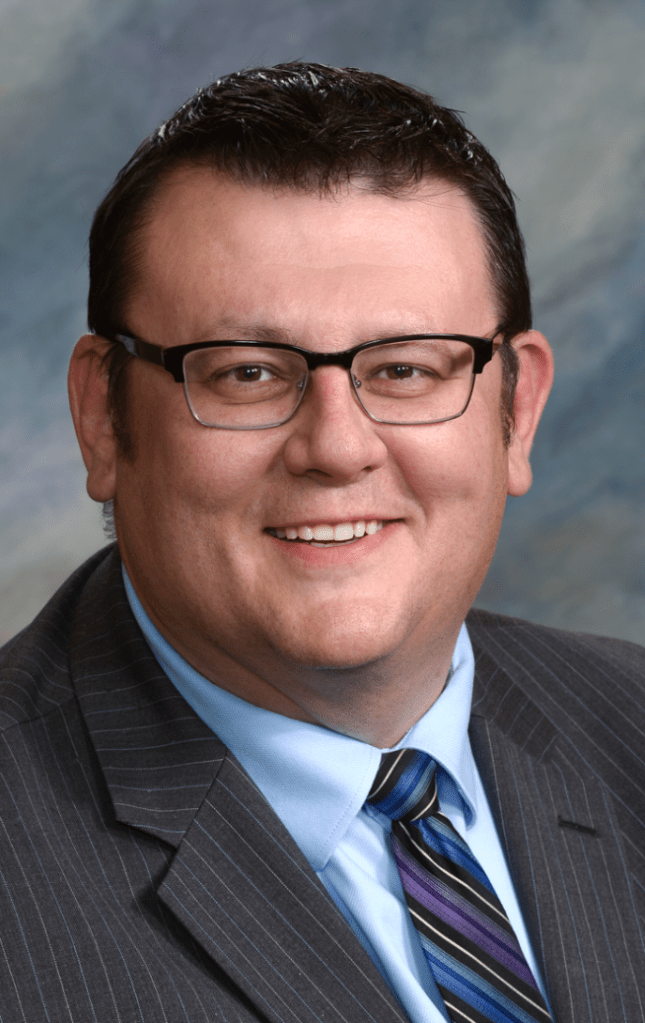
24. Brock Greenfield, R-Clark – 26 years
Greenfield, a businessman and teacher, was the youngest state senator in South Dakota history when he was first elected in 2000. He served in the Senate from 2001-08, the House from 2009-14, and then the Senate again from 2015-22, serving as president pro tempore from 2017-20. In 2022, Greenfield was elected commissioner of school and public lands.

23. Chris Nelson, R-White Lake – 26 years
Nelson worked for years in the office of Secretary of State Joyce Hazeltine as elections supervisor, and when she was term-limited in 2002, he was elected to replace her. Nelson was reelected without opposition in 2006, then in 2010 ran for U.S. House, losing in the Republican primary to Kristi Noem. Later that year, though, recently-reelected Public Utilities Commissioner Dusty Johnson chose to forgo his second term on the PUC to serve as Gov. Dennis Daugaard’s chief of staff, and Daugaard appointed Nelson to replace Johnson on the PUC. Nelson won a special election in 2012, and was reelected to six year terms in 2016 and 2022.
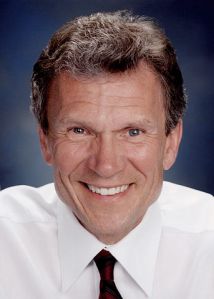
22. Thomas A. Daschle, D-Aberdeen – 26 years
Daschle was an Air Force veteran and staffer to U.S. Senator Jim Abourezk when he was elected to the U.S. House from South Dakota’s First District in 1978 at the age of 31, having won the open seat against Republican Leo Thorsness by only 139 votes. He was reelected three times, including a 1982 showdown against fellow incumbent Clint Roberts when South Dakota lost its second congressional district. In 1986, Daschle was elected to the U.S. Senate, defeating incumbent Senator Jim Abdnor, and he was reelected easily in 1992 and 1998. During his eighteen years in the Senate, Daschle rose through the ranks among Senate Democrats, winning the position of Democratic Leader in 1995. He was Senate Majority Leader in 2001-02, the only South Dakotan to serve in that position. In 2004, Daschle lost reelection to former Congressman John Thune. Today, he resides in the DC area where he works in government affairs and lobbying.
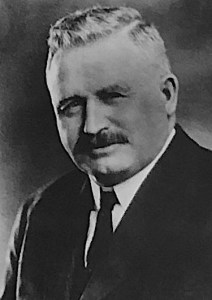
21. Peter Norbeck, R-Redfield – 27 years, 11 months
Norbeck, the owner of a large well-drilling contractor, served for six years in the State Senate from 1909-15. During that time he advocated for the creation of Custer State Forest, and helped to lay out the grounds for the State Capitol; his company drilled the artesian well that heats Capitol Lake. Norbeck was elected lieutenant governor, serving 1915-17, and then governor, serving 1917-21. He promoted state-owned enterprises including the State Cement Plant and supported the women’s suffrage movement and the prohibition of alcohol. Norbeck led the state during World War I, leading efforts to sell war bonds, aid draft boards, and conserve food and fuel. Norbeck founded Custer State Park, the state’s first state park. An avid sportsman, Norbeck held the state’s first hunting season for the Chinese Ringneck Pheasant, and authorized a state purchase and release program to boost the pheasant population.
Norbeck was elected to the United States Senate in 1920. During his 16 years in the Senate, he brought Gutzon Borglum to South Dakota to carve Mount Rushmore, and aided in the development of Iron Mountain Road, Sylvan Lake, the Needles Highway, Wind Cave National Park, and Badlands National Monument. He also promoted the Black Hills in 1927, when he convinced President Calvin Coolidge to make the State Game Lodge his summer White House. Norbeck was elected to two more terms in the U.S. Senate, serving until his death in December 1936.
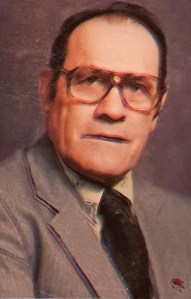
20. Robert B. Weber, R-Strandburg – 28 years
Weber was a farmer south of Strandburg, in rural Grant County. He was first elected to the State House in 1972 and was reelected thirteen more times, spending his entire 28-year public career in the House. Weber was among the first class of legislators forced to retire by term limits in 2000. He retired to his farm, and died in September 2021.

19. Art B. Anderson, R-Sioux Falls – 28 years
Anderson, an service station operator and bulk oil dealer, was first elected to the State House in 1940, serving three terms from 1941-47. He served one term in the State Senate from 1947-48, then ran unsuccessfully for the US House from the first district, losing the Republican primary to Harold Lovre. Anderson returned to the State Senate two years later, serving for another twenty years from 1951-71. During his time, he became known as “Mr. Highway” for his chairmanship of the Transportation Committee and his leadership in the construction of the Interstate Highway System and financing of highway projects. Anderson was among the first inductees into the South Dakota Transportation Hall of Fame in 1972, alongside others including Francis Case and Peter Norbeck. He had retired from the State Legislature in 1970 and remained in Sioux Falls until his death in 1978.

18. Albert R. Risty, R-Corson – 28 years
Risty, a farmer in rural Minnehaha County, was first elected to the State Senate in 1936. He served for twenty years, from 1937-57, and in 1949-50 was the Senate’s President Pro Tempore. In 1962, Risty returned to the legislature, seeking election to the State House, where he served eight years from 1963-71. Like many community leaders, Risty served in many other capacities, including school board, township board, mutual insurance board, bank board, and hospital board. He died in 1983.

17. Walter Dale Miller, R-New Underwood – 28 years
Miller, a Meade County rancher, was elected to the State House in 1966 alongside Bud Wood and Henry Poppen. Miller served in the State House of Representatives for 20 years. He is the only person in the history of the state to serve as Majority Leader, Assistant Majority Leader, Majority Whip, Speaker of the House, Speaker pro Tempore, and President of the Senate. He is among those this blog earlier remembered in the post “Old Bulls of the State Legislature.”
In 1986, George S. Mickelson invited Miller to be his running mate. After the Mickelson-Miller team was elected, Miller made history when he became the state’s first full-time lieutenant governor. That experience became important on April 19, 1993, when Governor Mickelson died with seven others in a crash of the state airplane. Miller was the first lieutenant governor in South Dakota’s history to succeed to the governorship upon the death of his predecessor. At the age of 67, he was also the oldest governor in state history. During his time as governor, Miller ended a riot at the state penitentiary, responded to historic flooding of the Missouri River and its tributaries in 1993, responded to the court-ordered shutdown of video lottery with emergency budget cuts. Miller lost his bid for a full term in 1994 to former Governor Bill Janklow. He retired to his ranch and to Fort Pierre, and died in 2015.
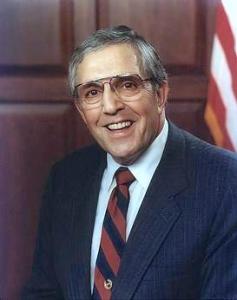
16. James Abdnor, R-Kennebec – 28 years
Abdnor, the son of Lebanese immigrants, began his career in elected office when he was elected to the State Senate from Lyman County in 1956. He spent twelve years in the Senate, until 1969, including eight years as Senate Appropriations Chair and two years, from 1965-66, as President Pro Tempore of the Senate. In 1968, Abdnor was elected lieutenant governor, during the era when the office was elected separately from the governor, and he served alongside Governor Frank Farrar.
In 1970, Abdnor ran for U.S. House from the Second District, losing the Republican primary to Frank Brady, who lost to Democrat Jim Abourezk. Two years later, Abourezk ran for U.S. Senate, and Abdnor was elected to the open U.S. House seat. He held that seat until 1980, when he successfully challenged incumbent U.S. Senator George McGovern. Six years later though, Abdnor’s electoral career ended when, after having surviving a primary challenge from Governor Bill Janklow, he was defeated by Democratic Congressman Tom Daschle. Abdnor accepted an appointment from President Ronald Reagan to serve as administrator of the Small Business Administration, and then retired in 1989. He died in 2012. Abdnor was a beloved figure because of his decency and love for people, and although a lifelong bachelor, he left a large cadre of loyal former staffers, most prominently U.S. Senator John Thune.

15. Gordon R. Pederson, R-Wall – 30 years
Pederson was first elected to the State House in 1976. He served for 22 years, until term limits forced his retirement in 1998, then returned in 2000, serving until 2008. Pederson served on the House Transportation Committee for 26 years, including 24 as chair, and served for fourteen years on the LRC Executive Board, the interim committee that oversees legislative operations, including two years as chair. After losing a bid for the State Senate in the 2008 Republican primary, Pederson retired to Wall. He died in 2011.

14. David Pulford, R-Madison – 30 years
Pulford was a farmer and lifelong resident of the Madison area. He was first elected to the State House in 1932 and served for thirty years, from 1933-63, charing the important State Affairs Committee. Pulford died in 1978.
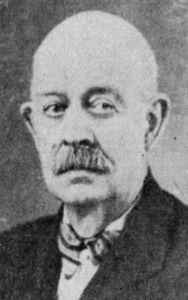
13. C. S. Amsden, R-Milbank – 30 years
Amsden served in the State Legislature for thirty years over a thirty-eight year period. He first served in the State Senate in 1905-07 and 1909-29, including service as President Pro Tempore of the Senate from 1915-29. He then served three different stints in the State House, from 1931-33, 1935-39, and 1941-43. Amsden died in 1944.
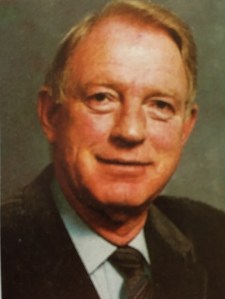
12. James B. Dunn, R-Lead – 30 years
Dunn entered the State House in 1971 and, after one term, entered the Senate in 1973, where he served for twenty-eight years. He is among those this blog earlier remembered in the post “Old Bulls of the State Legislature.” Dunn worked for the Homestake Mining Company, first winning his legislative seat two years after the retirement of Alfred D. Roesler, the next entrant on the list and a fellow Homestake employee. Dunn was assistant senate majority leader from 1989-92. When Democrats won control of the Senate in 1993, Dunn became assistant minority leader. He returned as assistant majority leader from 1995-98. In 1999 and 2000, Republicans gave Dunn the special title of “senior assistant majority leader.” Both Dunn and Majority Leader Mike Rounds were set to be term-limited in 2000, and this special title allowed Dunn to remain in his leadership role while Barb Everist of Sioux Falls was groomed to replace Rounds as majority leader in 2001. Dunn left the Senate in 2000, and he died in 2016.

11. Alfred D. Roesler, R-Deadwood – 30 years
Roesler, a longtime employee of the Homestake Mining Company, served one term in the State House from 1939-41, followed by 28 years in the State Senate from 1941-69. During his years in the Senate, he was President Pro Tempore during the 1953 session, and the Republican leader from from 1955-66, serving as Majority Leader for all but the 1959 session when the Democrats held the majority. He also chaired the powerful Senate State Affairs Committee. Roesler retired from the Senate and died in 1973.
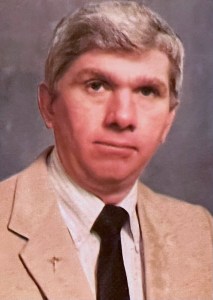
10. James A. Burg, D-Wessington Springs – 30 years
Burg, a farmer, first entered the State House at the age of 33 in 1975. After ten years in the State House, he was elected to the State Senate in 1984. In 1986, Burg was the early favorite to be the Democratic nominee for U.S. House, seeking the at-large seat being vacated by incumbent Congressman Tom Daschle, who was running for U.S. Senate. Burg narrowly lost, though, to fellow State Senator Tim Johnson of Vermillion. Burg instead accepted the Democratic nomination for Public Utilities Commission, serving three six-year terms from 1987-2005. He ran for Governor in 1994, losing the Democratic primary to Dakota Wesleyan University President Jim Beddow. Burg lost his bid for a fourth PUC term to Republican Dusty Johnson in 2004 and retired to Wessington Springs, where he still resides.
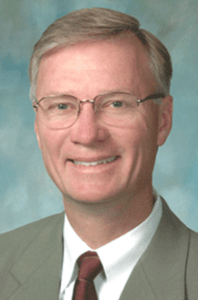
9. Gary W. Hanson, R-Sioux Falls – 30 years
Hanson’s career in elected office began in 1982 with his election to the State Senate. He moved into local office in 1988, winning a seat on the Sioux Falls City Commission, and then in 1994 was elected mayor of Sioux Falls, the first to serve under the new “strong mayor” city charter. After two terms as Mayor, Hanson was elected in 2002 to the Public Utilities Commission, where he still serves, having been reelected in 2008, 2014, and 2020. Hanson has said he will retire when his current term ends in 2026, ending a career that will include 30 years in state office, as well as 14 years in Sioux Falls city offices.

8. John J. Murphy, R-Parker – 30 years
Murphy was first elected to the State Board of Railroad Commissioners in 1912, and was reelected four times. He ultimately served on the board from 1913-43. During his tenure, in 1939, legislation was passed renaming the board the “Public Utilities Commission,” the name it still carries today.

7. Christopher A. Merkle, R-Leola – 30 years
Merkle was elected to the Public Utilities Commission in 1939, the year that its name was changed from “State Board of Railroad Commissioners.” He was reelected to four more six-year terms, retiring in 1969.

6. M. Michael Rounds, R-Pierre – 30 years
Rounds, a Pierre businessman, was first elected to the State Senate in 1990, defeating a Democratic incumbent. He served in the Senate for ten years, retiring due to term limits in 2000. In 1995, Republicans retook control of the Senate after two years and Harold Halverson, who had been Republican leader in the minority, asked Rounds to serve as majority leader, recognizing the need in the term-limits era for younger legislators to step into leadership roles. Rounds served as majority leader from 1995-2000.
In 2002, Rounds mounted an underdog campaign for governor against two better-known and better-funded Republican opponents. When the campaign between the front-runners became very negative, Rounds benefited from his low-key, positive campaign. He handily won the nomination in one of the state’s great political upsets, and was elected governor in November. Rounds was also easily reelected in 2006. During his time as governor, Rounds promoted development of the underground laboratory at the former Homestake Gold Mine, supported expansion of university research programs, and launched a “2010 Initiative” to advance economic development and tourism. He also raised private funds to build a new Governor’s Mansion.
Rounds left the Governor’s Office in 2011, and in 2014 was elected to the U.S. Senate, making him the first South Dakota governor to enter the Senate since Harlan J. Bushfield. He was reelected in 2020. Rounds’ time in public office will reach 30 years at the end of his current term in 2026. He has not announced his plans for 2026 or beyond.
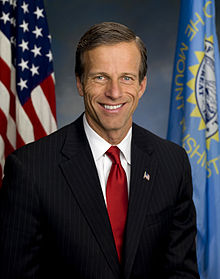
5. John Thune, R-Sioux Falls – 30 years
Thune was first elected to the U.S. House in 1996, winning a Republican primary against Lt. Governor Carole Hillard and a general election against former Daschle staffer Rick Weiland. He served in the U.S. House for three terms. In 2002, Thune initially planned to run for governor, but instead challenged incumbent U.S. Senator Tim Johnson, losing by 524 votes.
In 2004, Thune bounced back, challenging U.S. Senator Tom Daschle, a three-term incumbent who was also the Democratic leader in the U.S. Senate. This time, Thune prevailed narrowly, by 1.2%. He was reelected without opposition in 2010 – the only time in South Dakota history that a U.S. Senator has run unopposed – and won handily in 2016 and 2022. His 2022 victory makes Thune only the second South Dakota to win four terms in the U.S. Senate, joining Karl Mundt.
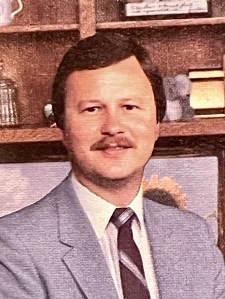
4. Vernon L. Larson, R-Vivian – 33 years, 5 months
Larson is the longest serving constitutional officer in South Dakota history. After beginning his career as a staffer to U.S. Senator Jim Abdnor, a fellow Lyman County native, Larson was elected State Auditor in 1978. He was reelected five times, serving six four-year terms from 1979-2003. When term limits required Larson to retire as State Auditor, he ran in 2002 for State Treasurer, an office held from 2003-11. Larson retired in 2011 after thirty-years as a constitutional officer. He expanded his record, though, in 2013, when Governor Dennis Daugaard appointed Larson to serve as Commissioner of School and Public Lands, completing the term of Jarrod Johnson, who had resigned. Larson didn’t seek a full term in that office and retired to Vivian, where he still resides.

3. C. L. “Roy” Doherty, R-Rapid City – 34 years
Doherty is the longest serving state elected official in South Dakota history (note that the Public Utilities Commission, which is created by statute, is not a constitutional office). Doherty was a three-term mayor of Rapid City and civic leader when he ran in 1936 for what was then known as the State Board of Railroad Commissioners. Democrat Windsor Doherty had resigned in 1936, and Governor Tom Berry appointed Democrat Fred B. Ray to succeed him. Roy Doherty challenged Ray in the 1936 election, winning the remaining four years on the six year term, and then was reelected five more times. During that time, the State Legislature renamed the the commission as the “Public Utilities Commission,” and Doherty retired from the PUC in 1971 at the age of 81.
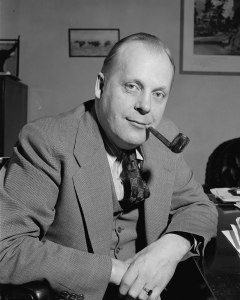
2. Karl E. Mundt, R-Madison – 34 years
Mundt is the longest serving member of Congress from South Dakota, spending his entire 34-year public career in federal office. A native of Humboldt, Mundt was a teacher, debate coach, and superintendent, and then a professor at what is today Dakota State University in Madison. Mundt ran for Congress in 1936 but lost to the incumbent, Democrat Fred Hildebrandt; he was elected two years later when Hildebrandt left the seat in a failed bid for U.S. Senate. Mundt served ten years in the U.S. House, where he became a leading anti-Communist and a friend of fellow Congressman Richard Nixon. He was elected to the U.S. Senate in 1948, taking office early due to the death of U.S. Senator Harlan Bushfield. He was reelected three times, making him the first South Dakotan to serve four terms in the U.S. Senate. Mundt suffered a debilitating stroke in late 1969 but refused to resign, holding his seat until his term ended in January 1973. He died the following year.

1. Timothy P. Johnson, D-Vermillion – 36 years
Tim Johnson holds the top position on this list, serving 36 years in state and federal office. Remarkably for a Democrat in a Republican state, Johnson never lost an election, beginning with four state legislative terms, five terms in the U.S. House, and three terms in the U.S. Senate. He is also the only three-term U.S. Senator from South Dakota to retire voluntarily; Peter Norbeck died in office, and George McGovern, Larry Pressler, and Tom Daschle all lost their bids for fourth terms.
Johnson’s political career began when he was elected to the State House from Vermillion in 1978; after two terms, he was elected to the State Senate in 1982. In 1986, Johnson ran for the U.S. House seat being vacated by incumbent Tom Daschle, who was running for the U.S. Senate. Johnson was initially an underdog in the Democratic primary, but he prevailed narrowly over fellow State Senator Jim Burg, and then won in November against Republican Dale Bell. Johnson was reelected easily four times, and in 1996 he successfully challenged U.S. Senator Larry Pressler. Johnson’s closest election came six years later, when he was challenged for a second term by Congressman John Thune. He prevailed in that election by only 524 votes, or 0.15% of the votes cast. Johnson’s career ran in tandem with that of fellow Democrat Tom Daschle; the two served in Congress together from 1987-2005. While Daschle rose in the ranks of Senate leadership, Johnson delivered for South Dakota on the Senate Appropriations Committee and eventually chaired the Senate Banking Committee.
In late 2006, Johnson suffered stroke-like symptoms while on a press call, caused by a congenital defect. This left Johnson with impaired speech and mobility, requiring him to use a motorized wheel chair. Despite that, Johnson ran for reelection in 2008, handily winning a third term. He did not seek reelection in 2014, retiring to Sioux Falls.
Future members of “Over 25”
Several active political figures in South Dakota are approaching the “over 25” milestone and could reach it in the next two or three election cycles.
State Senator Jean Hunhoff of Yankton will have served 24 years in the legislature at the end of her current term; she would need to be elected once more to enter this list. State Senator Al Novstrup of Aberdeen is two years behind Hunhoff, serving his eleventh term for 22 years of legislative service.
Public Utilities Commissioner Kristie Fiegen will join her colleagues, Gary Hanson and Chris Nelson, in the “Over 25” club if she is elected once more. Fiegen served eight years in the state legislature, and after being appointed by Gov. Dennis Daugaard to fill a vacancy on the PUC for seventeen months, has subsequently been elected to two six-year terms; she next runs in 2024.
State Auditor Rich Sattgast served eight years as state auditor, eight years as state treasurer, and has now returned to the state auditor’s office, serving a four-year term. He was reelected in 2022 and will need to be elected to one more term to reach 25 years.
Finally, Governor Kristi Noem and Lt. Governor Larry Rhoden could both enter the 25 club if their political service continues. Governor Noem has served four years in the state legislature, eight years in the U.S. House, and her two terms as governor bring her to 20 years of service, with the potential for future offices ahead of her. Likewise, Lt. Governor Rhoden has sixteen years of legislative service and his two terms as lieutenant governor bring him to 24 years of service.
